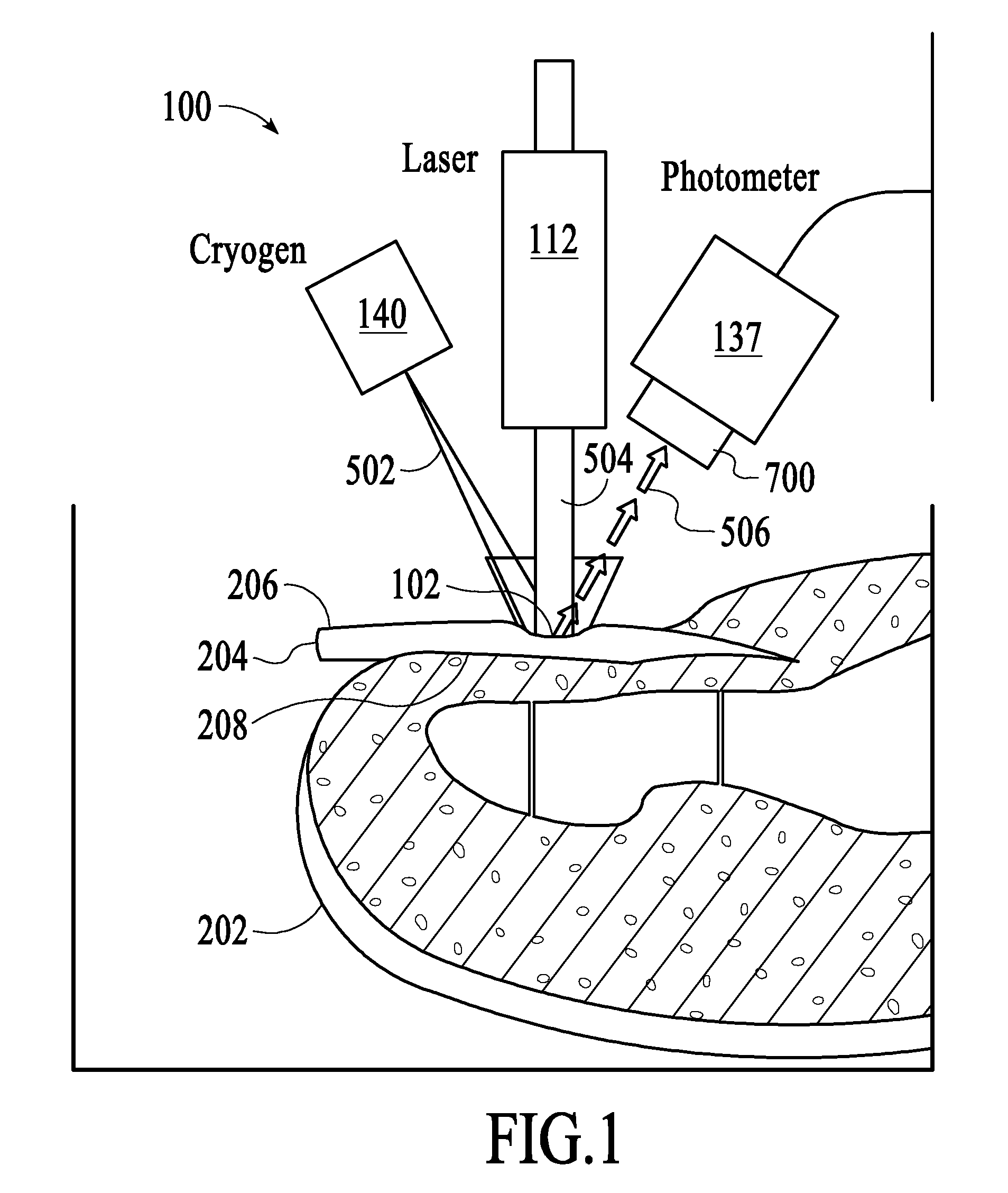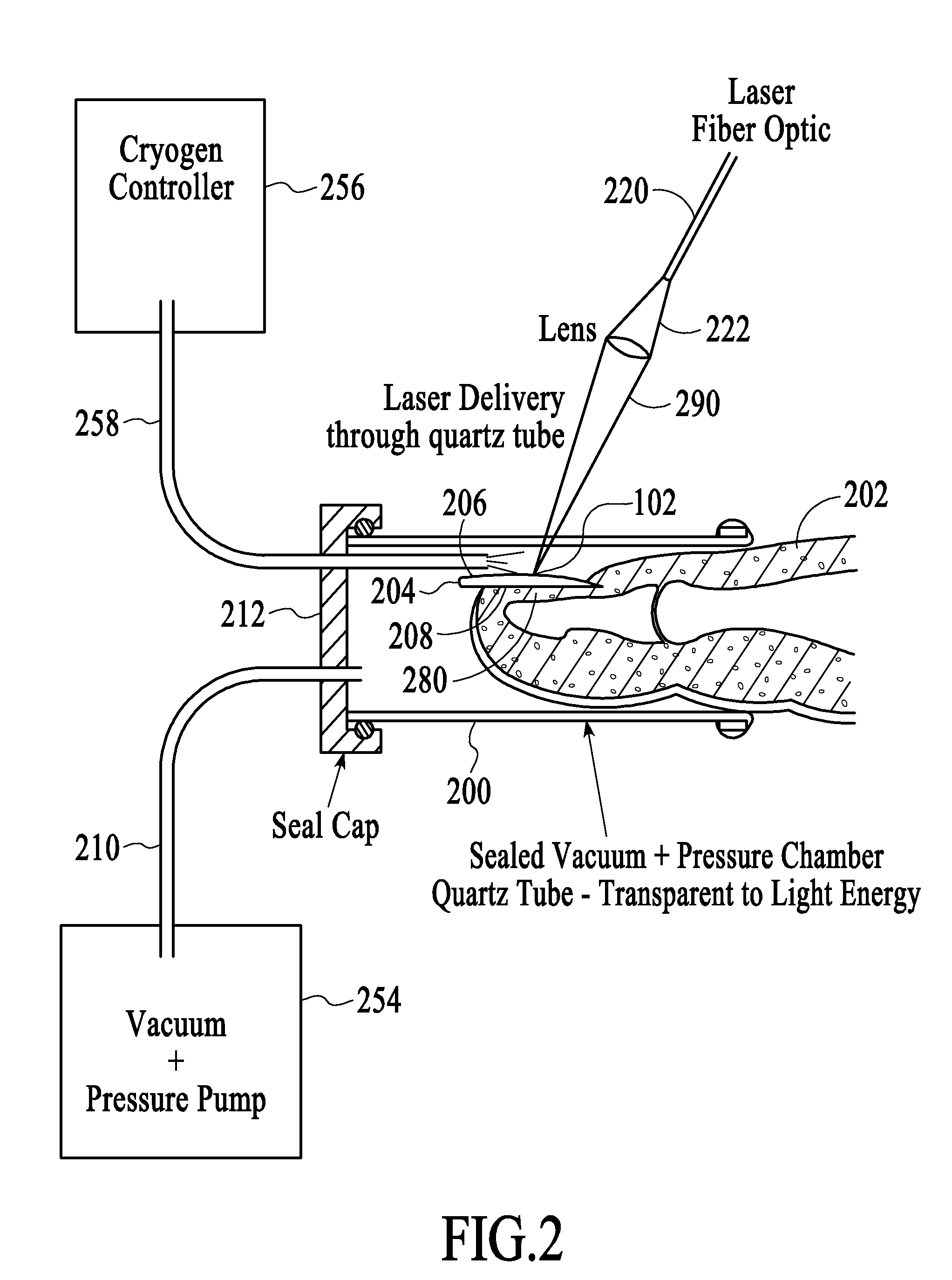Treatment of Microbial Infections Using Hot and Cold Thermal Shock and Pressure
- Summary
- Abstract
- Description
- Claims
- Application Information
AI Technical Summary
Benefits of technology
Problems solved by technology
Method used
Image
Examples
experiment i
[0090]Soaking the nail in a water bath or with a wet towel laid on the toes increases the hydration of the nail and improves the absorption of 1320-2100 nm laser exposure. This allows effective treatments at lower power and reduces possible injury. Pre-treatment hydration will be described and discussed in later section of the application. Many prior art assumes that the treatment energy must be transmitted through the nail to treat the fungus itself in the nail bed.
[0091]Dry nail is composed of a fibrous protein called keratin. Experiment I tests showed that the use of a 1470 nm laser required very little power to heat up a nail that has been soaked in water to get hydrated. Equivalent heating of a dry nail requires 7 watts of 1064 nm, 2 watts of 1320 nm but only 1 watt of 1470 nm We discovered that there is an absorption peak in fibrous proteins at about 1500 nm that would explain this effect.
[0092]The present invention comprises the step of irradiating the microbe with infrared r...
experiment ii
[0096]The CoolTouch® laser was used to treat infected large toenails in two individuals with a single treatment. New clear growth was seen at three months and the nails are completely clear at nine months post treatment. The laser was used on six Podiatry patients suffering from onychomycosis with a single treatment. At three months a band of clear nail is seen in all six patients and the site was tested and confirmed to be free of fungal infections.
experiment iii
[0097]In recent years, the eradication of Trichophyton rubrum (toenail fungus) has been attempted via laser irradiation. Researchers have recognized that this approach could result advantageous relative to oral, mechanical and chemical therapies. However, anticipating that the fluences required to achieve the necessary thermal effects on this fungus could unintentionally damage the underlying toe dermal layer, two auxiliary approaches are explored in this Experiment:
[0098](a) laser irradiation under vacuum pressure, with and without water dousing; and
[0099](b) rapid-cooling followed by laser heating (thermal shock).
[0100]The rationale behind these two approaches is that at low pressures, the temperature necessary to achieve fungus necrotic thermal effects, e.g., water evaporation / boiling, is significantly reduced, and thus requires lower fluences. Similarly, a thermal shock induced by a cryogen-cooled tip or spurt followed by laser irradiation may require much lower fluences to achi...
PUM
 Login to View More
Login to View More Abstract
Description
Claims
Application Information
 Login to View More
Login to View More - R&D
- Intellectual Property
- Life Sciences
- Materials
- Tech Scout
- Unparalleled Data Quality
- Higher Quality Content
- 60% Fewer Hallucinations
Browse by: Latest US Patents, China's latest patents, Technical Efficacy Thesaurus, Application Domain, Technology Topic, Popular Technical Reports.
© 2025 PatSnap. All rights reserved.Legal|Privacy policy|Modern Slavery Act Transparency Statement|Sitemap|About US| Contact US: help@patsnap.com



